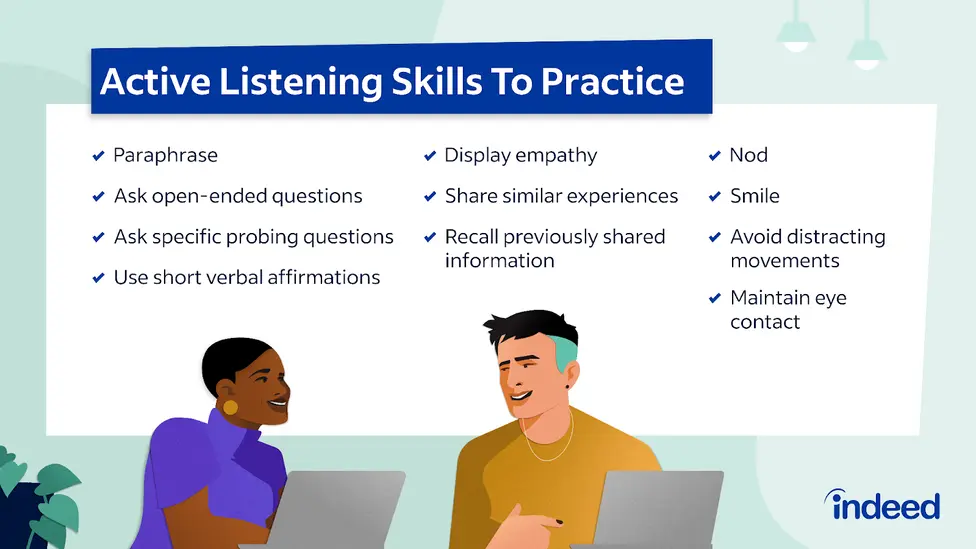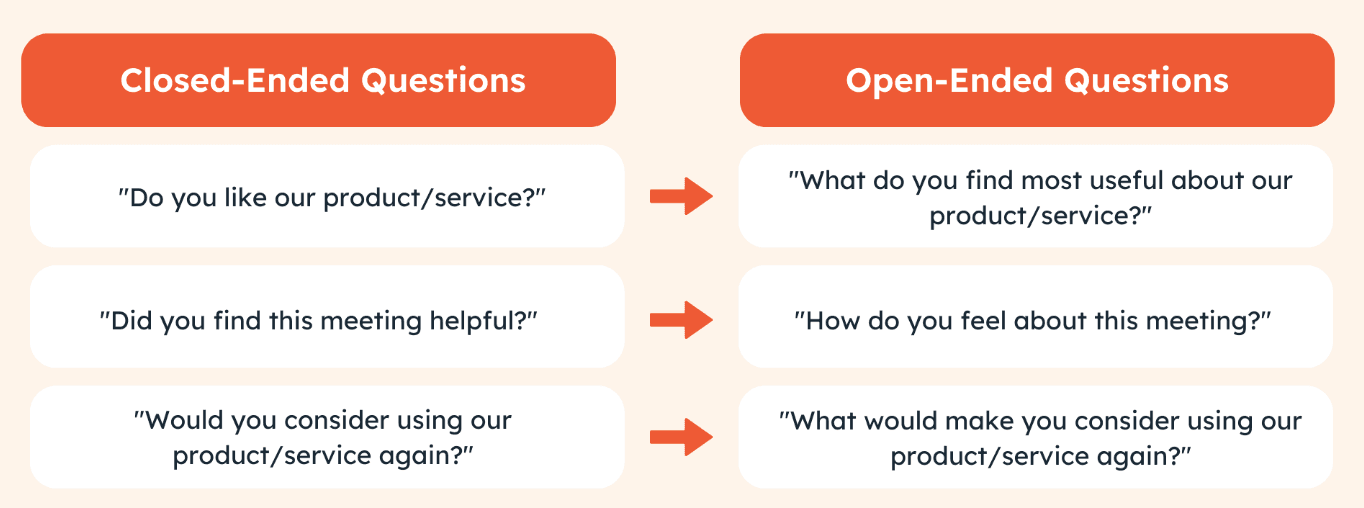
How to Talk to Customers? Client Communication Best Practices
In the world of business, effective communication is the linchpin that holds relationships together and drives success. This article delves into the art of client communication, offering a comprehensive guide to mastering this essential skill.
Effective communication sits at the core of every successful business interaction. Whether you're sealing a deal, addressing concerns, or simply building rapport, the way you converse with clients can make or break relationships.
If you've ever wondered how some businesses manage to maintain stellar client relationships, the answer often lies in the nuances of their communication.
In this blog, we're about to share strategies that aren't just theories but are tried and tested. Learn the best practices for client communication, and how to talk to customers as per their communication preferences. Gear up to transform your client interactions from good to unforgettable.
Listen Actively
Active listening is the conscious effort to hear not only the words being spoken but, more importantly, the complete message being sent. In a business context, this means engaging with the customer fully, absorbing their concerns, and responding thoughtfully.
Employing active listening is one of the fundamental client communication best practices as it ensures that you're genuinely addressing your client's needs rather than operating on assumptions.

Put away distractions, be it your phone, laptop, or even your internal preoccupations. Give the client your undivided attention.
Occasionally, paraphrase or summarize what the client has said. This not only confirms your understanding but also assures the client that they're being understood. A simple, "If I understand correctly, you're saying..." can make a world of difference. This aligns with client communication best practices that prioritize understanding.
Before entering a conversation, take a few deep breaths to center yourself. This practice can help declutter the mind, allowing you to focus better on the conversation at hand.
READ ALSO: 5 Aspects to be Taken into Account While Providing Customer Service Over the Phone
Communicate Clearly and Concisely
The ability to convey messages that are both precise and to the point ensures that there's minimal room for confusion or misinterpretation. After all, in our bustling world, clients appreciate it when professionals can communicate effectively without overburdening them with excess information. Understanding customer communication preferences plays a role in achieving this.
So, what does it mean to communicate clearly and concisely?
It means stripping your message down to its essence. It's about eliminating jargon, avoiding overly complex sentence structures, and presenting information in a straightforward manner. It's not about dumbing things down, but rather about making your communication more accessible.
Here are some practical ways to put this into action:
- Know Your Objective: Before you start communicating, be clear on what you want to convey. Having a defined purpose helps streamline your words and ensures you remain on topic.
- Avoid Jargon: Every industry has its own set of technical terms. While these may be familiar to you, your client may not understand them. Always opt for plain language.
- Be Mindful of Sentence Length: Long, winding sentences can be hard to follow. Aim for shorter, crisp sentences that deliver the point without unnecessary embellishments.
- Use Visual Aids: Sometimes, a well-placed chart, graph, or even a simple illustration can convey a point more efficiently than words alone.
Clear and concise communication respects the client's time and intelligence. By embracing this approach, you position yourself as a considerate and efficient professional, traits that clients highly value in today's fast-paced business environment.
Update Regularly
Regular updates, even if they seem minor, serve as a bridge of trust between you and the client. Think of it this way: In the absence of information, people tend to fill the void with assumptions, and more often than not, these assumptions veer toward the negative. Regular updates quash uncertainties, reassuring clients that they are a priority and that their projects or concerns are in capable hands.
Why is updating regularly so fundamental?
At its core, the act of regular updating underpins transparency and accountability. Clients, whether they vocalize it or not, are always keen on progress or changes, especially when they've invested time, money, and trust. By offering them a window into the process, you're essentially saying, "I value your trust, and here's how things are moving along."
Here's how you can incorporate regular updates into your communication:
- Set a Schedule: Depending on the nature of the project, determine a suitable frequency for updates. It could be daily, weekly, or monthly. Once decided, adhere to this timeline.
- Use Automated Tools: Leveraging technology, like CRM systems, can automate update reminders or even send updates directly, ensuring you never miss a beat.
- Be Proactive, Not Reactive: Don’t wait for clients to ask for an update. Anticipate their need for information and offer it proactively.
- Balance Detail with Brevity: While it's essential to keep clients informed, it's equally crucial to strike a balance. Give them the necessary details without overwhelming them.
- Celebrate Milestones: Updates needn't always be routine. Highlighting achieved milestones can instill confidence and build excitement.
- Acknowledge Challenges: If there's a hiccup or delay, communicate it. Honesty in such situations often fosters understanding and maintains trust.
Personalize Your Interactions
Imagine walking into a cafe where the barista remembers your favorite drink or a bookstore that suggests novels based on your previous purchases. These gestures, rooted in personalization, make you feel seen and valued. The same principle applies in client communications. When clients sense that interactions are tailored specifically for them, they feel a stronger connection to your business, leading to increased trust and satisfaction.
In an age where generic automated responses and mass-produced messages are commonplace, personalizing your interactions can be a refreshing deviation, often making the difference between a one-time transaction and a loyal client relationship. It goes beyond merely addressing clients by their first name in emails; it’s about tailoring your approach to suit each client’s unique preferences, needs, and history with your business.
To infuse personalization into your client communications, consider the following strategies:
Do Your Homework: Before interactions, review the client's history, previous concerns, preferences, or any personal details they might have shared. This allows you to tailor your conversation accordingly, improve your conversion rate, and improve your UX.
- Take Notes: After meetings or calls, jot down any new information or personal details. These can be invaluable for future interactions.
- Acknowledge Important Dates: Sending a simple message on birthdays, anniversaries, or relevant business milestones can resonate deeply with clients.
- Segment Communications: If sending out newsletters or updates, segment your client base and tailor the content to fit different segments' interests or needs.
- Ask for Preferences: Directly inquire about their preferred mode of communication or the frequency of updates. Directly inquire about their preferred mode of communication or the frequency of updates. Respecting these customer communication preferences can enhance the client's overall experience.
Ask Open-Ended Questions
Clients are reservoirs of insights, feedback, and perspectives. When you encourage them to share more extensively, you not only gain valuable information but also empower them to actively participate in the conversation.
One effective method in learning how to talk to customers is to incorporate open-ended questions.
Unlike their close-ended counterparts, which often result in brief answers like 'yes' or 'no', open-ended questions encourage more detailed and thoughtful responses.
This participation ensures that they feel heard and valued, fostering trust and collaboration.

Here's how and why you should weave open-ended questions into your interactions:
- Discover Genuine Feedback: Instead of asking, "Is everything okay?", try "How do you feel about the progress so far?". The latter will likely provide you with more actionable feedback.
- Understand Needs and Preferences: "What are you hoping to achieve with this project?" gives the client space to detail their expectations and objectives. This way you can convince clients to buy from you without sounding too pushy.
- Foster Collaboration: Questions like "How do you see us tackling this challenge?" make the client feel like an integral part of the solution.
- Clarify Ambiguities: When things aren't entirely clear, questions like "Can you elaborate on that point?" help in gaining a clearer picture.
- Build Relationships: Beyond just business, asking "What inspired you to get into this field?" can create rapport and deepen client relationships.
Integrating open-ended questions does more than just elicit longer responses. It sends a powerful message that you're genuinely interested in the client's thoughts, concerns, and aspirations.
Judge When to Respond Promptly vs. Take a Pause
Timeliness is paramount in communication, but it's not just about speed. Sometimes, the best response requires a moment of reflection. Striking the right balance between immediate feedback and taking a moment to ponder is an art, one that can make a significant difference in the effectiveness of your client communications.
Here's how to navigate this delicate balance:
- Assess the Urgency: Some client communications demand instant attention, especially if they concern time-sensitive matters or pressing concerns. Recognizing these situations allows for timely interventions. It sends a powerful message that you're genuinely interested in solving issues and that you understand how to talk to customers.
- Acknowledge Receipt: If a query requires more time to address, a simple acknowledgment like "I've received your message and am looking into it" can reassure the client while buying you some time.
- Determine the Complexity: For multifaceted issues or ones that demand collaboration with others, it's okay to take a step back and formulate a well-informed response.
- Trust Your Instincts: If a message stirs strong emotions, it might be prudent to take a pause. Responding in the heat of the moment can sometimes exacerbate situations.
- Set Clear Boundaries: Let clients know your response times or 'offline' hours in advance. This transparency manages expectations and ensures that you have adequate reflection periods when needed.
- Use Technology Wisely: Tools like 'read receipts' can sometimes pressure you into replying instantly. Judge whether such features are beneficial in your line of communication.
Choose the Appropriate Channel
From emails and phone calls to instant messaging and video conferences, each channel offers its unique flavor of interaction, and understanding which to use can greatly impact the effectiveness and tone of your communication.
The medium influences not just the speed of the message but also its depth, formality, and even emotional resonance.
Here's a guide to making informed choices about communication channels:
- Assess the Nature of the Message: Is it a formal proposal or a quick update? An email or a formal letter might be best suited for detailed content, while instant messaging fits casual updates.
- Understand Your Client's Preferences: Some clients might appreciate the immediacy of a text, while others may prefer the structure of an email. Tailoring your medium to your client's comfort can enhance the communication experience.
- Consider the Urgency: If a response is needed immediately, a phone call or instant messaging might be apt. For less urgent matters, an email gives the recipient time to digest and respond.
- Evaluate the Need for Visuals: When discussing complex ideas or presenting visual data, video calls or face-to-face meetings can be more effective.
- Think About Record-Keeping: Emails or documented platforms are valuable when you need a record of the conversation for future reference.
- Factor in Personal Touch: Sometimes, a personal note or a face-to-face meeting can add a layer of authenticity and warmth that digital communication might lack.
Use Positive Language
The words we choose and the tone we adopt can deeply influence perceptions, emotions, and outcomes.
Positive language fosters optimism, builds trust, and strengthens rapport. It shifts the focus from problems to solutions, from blame to understanding.
Using positive language when figuring out how to talk to customers isn't about painting an unrealistically rosy picture or sidestepping challenges. It's about framing conversations in a constructive, forward-thinking manner that encourages collaboration and mutual respect.
Here's how to infuse your interactions with positive language:
- Reframe Negative Statements: Instead of saying, "We can't do this until next week," try "We will have this ready for you by next week."
- Avoid Absolutes: Words like "always" or "never" can sound accusatory. Instead of "You always send files late," consider "It would be helpful if we receive files a bit earlier."
- Highlight Solutions: Whenever presenting a challenge, accompany it with a potential solution. "We encountered an issue with the design, but here's a way we think we can address it."
- Show Empathy and Understanding: Phrases like "I understand where you're coming from" or "Thank you for your patience" acknowledge the client's feelings and perspectives.
- Choose Words that Encourage Collaboration: Using "we" instead of "I" or "you" can promote a sense of teamwork. "We can work on this together" feels inclusive and united.
- Stay Away from Negative Fillers: Instead of starting with "Unfortunately" or "I'm afraid," get straight to the point, and then follow up with a positive or solution-based statement.
Using positive language when interacting with customers isn't about avoiding challenges but fostering collaboration and respect. By infusing your conversations with positivity, reframing negatives, highlighting solutions, showing empathy, and avoiding negative fillers, you'll optimize customer experience.
Final Thoughts
In the realm of business, mastering the art of conversation is more than just a skill—it's a catalyst for growth and relationship-building. As you move forward, remember that each client interaction is an opportunity to learn, adapt, and improve.
Challenge yourself to not only implement what you've learned here but also actively seek feedback. Let every dialogue be a stepping stone to better understanding, deeper connection, and unparalleled success.
After all, the journey to impeccable communication is continuous; how will you shape your next conversation?
Author bio:
Trevor Hatfield is a SaaS growth consultant and managing partner of Ring4. He leads product development and drives innovation for building the best lightweight business phone solution in the cloud.

Start generating leads today!
Get a 14-day free trial now,
set up the widget on your site, and see how many more leads you can capture with CallPage
- No credit card required
- 10 minutes set up
- 14 days fully-features free trial